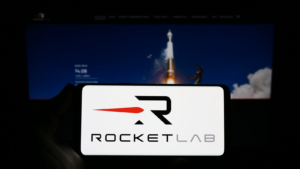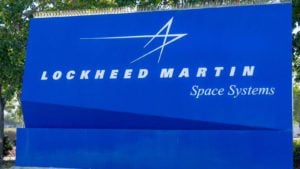The UN-Portugal policy symposium on the “Management and Sustainability of Outer Space Activities” highlighted the urgent need for inclusive and sustainable space governance, especially in light of recent advancements in the private space sector.
This, to me, is a bullish sign, as it indicates the space industry is rapidly developing and becoming a key talking point. Although we may be in the very earliest stages of witnessing its commercialization, I also feel this is where we will see the most opportunities.
So, with that being said, here are three space stocks to buy for investors this year.
Rocket Lab USA (RKLB)

Rocket Lab USA (NASDAQ:RKLB) provides launch services and space systems solutions, including satellite deployment and spacecraft design.
The Electron small orbital launch vehicle, the Photon satellite platform and the upcoming Neutron launch vehicle are central to its portfolio. I see the most promise coming from its Neutron vehicle, slated to significantly improve its EBITDA over the long run.
For 2024, Rocket Lab provided an optimistic outlook. The company expects earnings to grow, with EPS forecasted to improve from ($0.41) to ($0.23) per share. Analysts maintain a Moderate Buy rating on RKLB stock, with an average price target indicating potential upside. Revenue for Q1 2024 was $92.8 million, up 69% year-over-year.
Despite some launch failures over the past year and other operational hiccups, I am still firmly bullish on RKLB, given its tiny valuation at just $4.16 per share at the time of writing. That makes it one of those space stocks for investors to consider.
Astra (ASTR)

Astra (NASDAQ:ASTR) focuses on providing cost-effective launch services for smaller satellites. The company’s innovative rocket designs aim to make space more accessible.
In 2023, Astra reported significant financial losses, including a GAAP net loss of $29.7 million for Q3 and adjusted EBITDA losses across multiple quarters. Revenues were relatively low, with Q2 revenue at $0.71 million and Q3 revenue at $0.26 million.
For 2024, however, Astra is focusing on enhancing its launch capabilities and expanding its product offerings. The company aims to increase revenues and improve margins by optimizing operations and securing new contracts. Analysts predict earnings growth, with projected EPS improving from ($2.40) to ($1.80) per share for upcoming quarters.
Satellite constellations are becoming increasingly popular, with around 2.6 billion of the world’s population without internet access. That’s because it’s physically impossible to connect some remote regions around the world, and satellites offer a solution to this. They are also used as a form of secure communication networks for governments and corporations.
Lockheed Martin (LMT)

Lockheed Martin (NYSE:LMT) is a leading defense and aerospace company involved in numerous space projects, including satellite development and space launch systems.
The company has significantly ramped up its production of small satellites, responding to increased demand from defense and intelligence agencies. Lockheed Martin recently opened a new small satellite assembly facility near Denver, Colorado, capable of manufacturing 180 spacecraft per year.
One of Lockheed Martin’s notable projects is the collaboration with NASA on its Artemis program. The company is also developing a human-rated Moon rover as part of NASA’s Lunar Terrain Vehicle Services (LTVS) contract.
The broader point of why I like LMT is that it’s one of the leading defense stocks in the world, supplying many NATO and neutral countries with the tools they need to defend themselves. It has a great total return history, outpacing the S&P 500 over the long-term charts, and has a strong 3-year dividend growth rate of 7.43%.
That makes it a diversified pick, with the space industry being a separate growth headwind in addition to the rising geopolitical tensions that fuel LMT’s valuation upwards.
On the date of publication, Matthew Farley did not hold (either directly or indirectly) any positions in the securities mentioned in this article. The opinions expressed are those of the writer, subject to the InvestorPlace.com Publishing Guidelines.
Matthew started writing coverage of the financial markets during the crypto boom of 2017 and was also a team member of several fintech startups. He then started writing about Australian and U.S. equities for various publications. His work has appeared in MarketBeat, FXStreet, Cryptoslate, Seeking Alpha, and the New Scientist magazine, among others.
